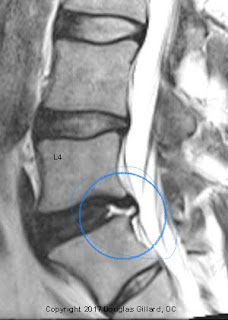Unveiling the Enigma of Lower Back Pain: Understanding Annular Tears
Introduction:
Lower back pain is a prevalent ailment affecting people of all ages and walks of life, with significant implications for quality of life, productivity, and healthcare costs. Among the myriad of potential causes, one often overlooked culprit is the annular tear – a condition that can lead to persistent discomfort and functional impairment. In this comprehensive guide, we delve into the intricate details of annular tears, exploring their causes, symptoms, diagnosis, and treatment strategies to empower individuals in managing this challenging condition.
Understanding Annular Tears:
The intervertebral discs in the spine play a crucial role in maintaining spinal integrity, acting as shock absorbers and allowing for flexibility and movement. These discs consist of an outer fibrous ring called the annulus fibrosus and a gel-like center known as the nucleus pulposus. An annular tear occurs when the tough, outer layer of the disc ruptures or tears, compromising its structural integrity.
Causes of Annular Tears:
Annular tears can arise from various factors, including:
1. Degenerative Changes: As individuals age, the intervertebral discs undergo wear and tear, making them more susceptible to tears and injuries.
2. Trauma or Injury: Sudden, forceful movements, lifting heavy objects improperly, or accidents can cause trauma to the spine, leading to annular tears.
3. Repetitive Stress: Activities or occupations that involve repetitive bending, lifting, or twisting motions can gradually weaken the annular fibers, predisposing them to tears.
4. Poor Posture and Body Mechanics: Maintaining improper posture or engaging in activities with poor biomechanics can place excessive stress on the spinal discs, contributing to tears over time.
Symptoms of Annular Tears:
The symptoms of an annular tear may vary in severity and presentation but commonly include:
1. Localized Lower Back Pain: Individuals may experience persistent or intermittent pain in the lower back region, often exacerbated by movement or certain positions.
2. Radiating Pain: Pain may radiate from the lower back down to the buttocks, thighs, or legs, following the path of the affected nerve roots.
3. Stiffness and Limited Mobility: Annular tears can cause stiffness in the lower back, making it challenging to bend, twist, or perform daily activities.
4. Numbness or Tingling: Compression of spinal nerves due to the tear may result in sensations of numbness, tingling, or weakness in the legs or feet.
Diagnosis of Annular Tears:
Accurate diagnosis of annular tears requires a thorough evaluation by a healthcare professional, which may include:
1. Medical History: A detailed history of symptoms, past injuries, and occupational or lifestyle factors is essential in identifying potential causes of lower back pain.
2. Physical Examination: A comprehensive physical examination can help assess spinal alignment, range of motion, muscle strength, and neurological function.
3. Imaging Studies: Imaging modalities such as MRI (Magnetic Resonance Imaging) or CT (Computed Tomography) scans provide detailed visualization of the spinal structures, allowing for the detection and assessment of annular tears and associated changes.
Treatment Strategies:
The management of annular tears typically involves a multidisciplinary approach aimed at alleviating pain, reducing inflammation, and promoting healing. Treatment strategies may include:
1. Conservative Measures:
- Rest: Temporary rest or modification of activities that exacerbate symptoms can help alleviate pain and facilitate healing.
- Physical Therapy: Targeted exercises and stretches can improve spinal stability, flexibility, and muscle strength, promoting recovery and preventing recurrence.
- Medications: Nonsteroidal anti-inflammatory drugs (NSAIDs), muscle relaxants, or analgesics may be prescribed to manage pain and inflammation.
- Epidural Steroid Injections: In cases of severe or refractory pain, corticosteroid injections into the epidural space around the affected nerve roots can provide temporary relief.
2. Minimally Invasive Procedures:
- Percutaneous Discectomy: This minimally invasive procedure involves the removal of the herniated disc material through a small incision, relieving pressure on the nerves and alleviating symptoms.
- Laser Therapy: Laser-assisted procedures may be used to target and shrink herniated disc material, reducing nerve compression and pain.
3. Surgical Intervention:
- Discectomy: In cases where conservative measures fail to provide relief, surgical removal of the damaged portion of the disc (discectomy) may be necessary to alleviate symptoms and prevent further complications.
- Spinal Fusion: In more severe cases or when instability of the spine is present, spinal fusion surgery may be performed to fuse adjacent vertebrae, stabilizing the spine and reducing pain.
Prevention and Lifestyle Modifications:
While some risk factors for annular tears, such as age and genetics, are beyond control, adopting healthy habits and lifestyle modifications can help reduce the likelihood of developing this condition:
1. Maintain Good Posture: Practicing proper posture while sitting, standing, and lifting can minimize strain on the spine and reduce the risk of disc injuries.
2. Exercise Regularly: Engaging in regular physical activity, including strength training and flexibility exercises, can help strengthen the muscles supporting the spine and improve overall spinal health.
3. Lift Safely: When lifting objects, use proper lifting techniques, such as bending at the knees, keeping the back straight, and avoiding twisting motions.
4. Maintain a Healthy Weight: Excess body weight can place added stress on the spine, increasing the risk of disc degeneration and tears. Maintaining a healthy weight through diet and exercise can reduce this risk.
5. Quit Smoking: Smoking has been linked to decreased blood flow and impaired healing in spinal tissues, making individuals more susceptible to disc degeneration and injuries.
Conclusion:
Annular tears represent a significant yet often overlooked cause of lower back pain, posing challenges in diagnosis and management. By understanding the causes, symptoms, and treatment options for annular tears, individuals can take proactive steps to address this condition and minimize its impact on their quality of life. With a multidisciplinary approach that may include conservative measures, minimally invasive procedures, and surgical intervention when necessary, individuals can find relief from pain and regain function, allowing them to live life to the fullest. Additionally, adopting preventive strategies and healthy lifestyle habits can help mitigate the risk of developing annular tears and other spinal conditions, promoting long-term spinal health and well-being.










Comments